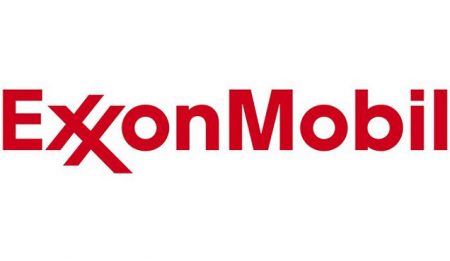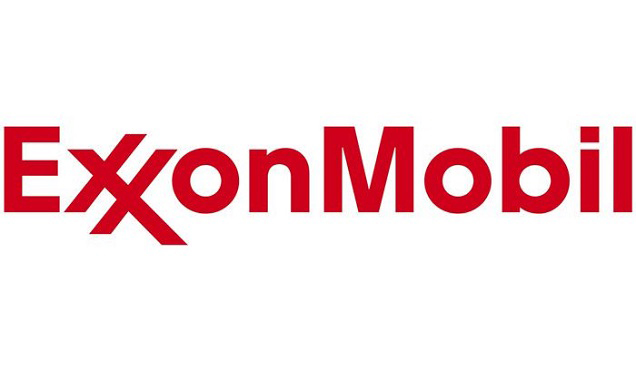At its third quarter earnings call on Friday, ExxonMobil talked up its Guyana prospects, which it now projects at close to 2.8 billion barrels of oil and it wants to get into production as soon as it can.
ExxonMobil’s third quarter earnings were above expectations. The world’s largest publicly traded company reported results of US$0.93 per share on US$66.1 billion in revenue compared to expectations of US$0.86 per share on US$63.3 billion. Its share price ended the day at US$83.71, up 0.29%.
And with the company’s recent announcement of its fifth new oil discovery at its Turbot Well in Guyana’s waters, Vice President of its Investor Relations Jeff Woodbury said that the company’s future production predictions are now on the higher end. This comes even as the United States oil giant and its partners prepare to roll out additional phased plans for its offshore blocks here.
“We’re very encouraged by the results in Guyana. We had previously given you a range of about 2.3 billion to 2.8 billion barrels of recoverable resource. Obviously, the Turbot results puts us towards the higher end of that. And we will certainly, as we better define Turbot, we will certainly refine our resource range,” Woodbury said at the company’s third quarter earnings call.

The company yesterday reported that it had earned US$4 billion in the third quarter, bringing year-to-date earnings to US$11.3 billion.
“Earnings rose 50% from the prior-year period, as commodity prices improved and business performance strengthened. All three business segments delivered solid results, generating cash flow from operations and asset sales that exceeded dividends and net investments for the fourth consecutive quarter,” Woodbury announced.
The company’s Vice President told of its strengthening position in South America, where the recent Turbot discovery proves a new play and additional potential along with plans to spud another named Ranger at the end of this month.
“We’re making good progress on further strengthening our portfolio in South America with high potential opportunities. First, in Guyana, we announced our fifth offshore discovery with the successful Turbot Well. The well encountered 75 feet of high-quality, oil-bearing sandstone reservoirs, and is located approximately 30 miles to the southeast of the Liza Phase 1 project. Evaluation of the discovery is underway. Importantly, this success proves a new play, and helps to de-risk multiple plays in the Turbot area. We plan to drill an additional well in the New Year to help delineate this discovery. The rig is now moving to the Ranger prospect, which is another new play test on the Stabroek Block,” Woodbury said.
Turbot is ExxonMobil’s latest discovery to date in the country, adding to previous finds at Liza, Payara, Snoek and Liza Deep. Following completion of the Turbot-1 well, the Stena Carron drillship will move to the Ranger prospect. An additional well on the Turbot discovery is being planned for 2018.
ExxonMobil affiliate Esso Exploration and Production Guyana Ltd. began drilling the Turbot-1 Well on August 14, 2017. The well is located in the southeastern portion of the Stabroek Block, approximately 30 miles (50 kilometers) to the southeast of the major Liza Phase 1 project.
The Stabroek Block is 6.6 million acres (26,800 square kilometers). Esso Exploration and Production Guyana Limited is the operator and holds a 45 percent interest in the Stabroek Block. Hess Guyana Exploration Ltd. holds a 30 percent interest and CNOOC Nexen Petroleum Guyana Limited holds a 25 percent interest.
Scale
Asked during the earnings call if the fact that the company’s rig stayed at the Turbot location for several weeks was because it was huge, Woodbury said it was too early to assess.
“Well, again, as you would expect that we are very pleased with the Turbot discovery. We do plan – as I may have indicated previously – we do plan going back and drill a follow-up well in 2018. The important message on Turbot is that it did confirm a new play, different depositional environment, and there’s still a lot of work to be done. It is early days in order to assess it, but there were a number of follow-up plays in this area that allows us to go ahead and better define and potentially go ahead and assess,” he explained.
He said that the company will continue its parallel exploration programme, which will be integrated into its development planning efforts and “things may change but [it is] very positive progress and certainly a very important component of our portfolio going forward.”
Fielding questions from Paul Cheng, of Barclays Capital, on the Turbot Well, Woodbury explained future plans.
“Yeah. So it [drilling] will – on the existing resource, it will be a delineation of the existing resource, there’s some – anytime you drill – remember this is a large area with a very small wellbore that’s gone through it. These are generally stratigraphic traps. And it’s about making sure that we test these multiple traps that we’ve seen in these accumulations. So it’s going to have several objectives as we go forward. And then, of course, there in the general Turbot area, there are several other prospects that given now we have now proven the play, we need to go ahead and integrate those learnings into our forward rig schedule,” he noted.
Woodbury later explained that overall ExxonMobil was seeking to get as quickly to the manufacturing phase here in Guyana in an effort to expand its resources as it simultaneously optimised its capabilities.
“If you think about my comments, you really want to get into that manufacturing mode very quickly. If you’ve got the resource – obviously, we’re going to continue our exploration programme, hopefully continue to grow the resource. You want to get into that manufacturing process because that will help continue to progress that learning curve and reduce your overall cost,” he said.





